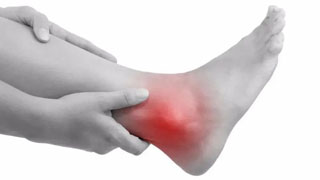
We have all twisted our ankles before. When the foot rolls onto the ankle, stretches or even tears the ligaments, it usually leads to ankle sprains. Ankle sprain is a common sports injury, but it can also occur while walking, jumping, or running.
The degree of sprain affects pain, ankle stability, and recovery time. For example, although grade I ankle sprains are mild, ligament damage is minimal and functional loss is rare. Recovery usually lasts for one or two weeks. On the other hand, a third degree ankle sprain involves complete tearing of the ligaments. Ankle instability can last up to six months or longer for recovery.
Although many of us have suffered from ice packs and given time for treatment due to ankle sprains, mild to severe ankle sprains require appropriate treatment and rehabilitation. This is not only important for your immediate recovery, but also for your future. If left untreated, ankle sprains can weaken the joint and lead to future injuries, resulting in long-term complications such as persistent instability, chronic pain, or arthritis.
How to recover from ankle sprain
Traditionally, the treatment for mild sprains involves resting, ice packs, supporting the ankle, and temporarily avoiding applying weight to the ankle. For more severe sprains, physical therapy is usually performed. However, increasing evidence suggests that even grade I sprains can benefit from physical therapy. Regardless of the severity, if you have recently sprained your ankle, please come for an assessment.
This is our entry point - and the earlier the better. The reason is as follows: Early treatment is very important for preventing injuries to other parts in the future. Seeking physical therapy now can help you recover faster and recover from ankle sprains without affecting other parts of your body.
So, what physical therapy should we adopt for sprained ankles?
Balance and proprioception - You may know what balance is (the ability to maintain an upright position), but proprioception may be unfamiliar to you. Ontological sensation is the ability of your body to perceive its relationship with the environment. Balance and proprioceptive assessment and practice are crucial for restoring appropriate ankle joint function and preventing future recurrence.
Strength - People easily rely on braces or shoes for support, but what happens once you no longer have external support? Don't you want to have built-in support? Enhancing your strength is key. Strengthening all areas above the ankle, including the hips and gluteal muscles, will help better locate the foot and ankle.
Preventing ankle sprains
In our physical therapy process, I suggest doing balance exercises and stretching exercises before and after physical activity. You also need to continue strengthening your feet and legs, wearing appropriate shoes, avoiding sudden and sharp changes in direction, and paying attention to the surface on which you walk, run, or jump.
Due to the high incidence of ankle sprains during certain contact sports and running, I often recommend "pre rehabilitation," which is a physical therapy primarily used for injury prevention. This therapy can also help alleviate the pain caused by current injuries or prepare for smoother postoperative recovery. For athletes who are prone to ankle sprains, previewing (off-season training) may help prevent sprains and shorten recovery time in the event of a sprain.
Seeking appropriate care is crucial as many sprains are not just ankle sprains. Physical therapy is an effective treatment tool that can help you stand up again and prevent future injuries. Therefore, keep moving towards your goal and don't let ankle sprains hinder your progress.


